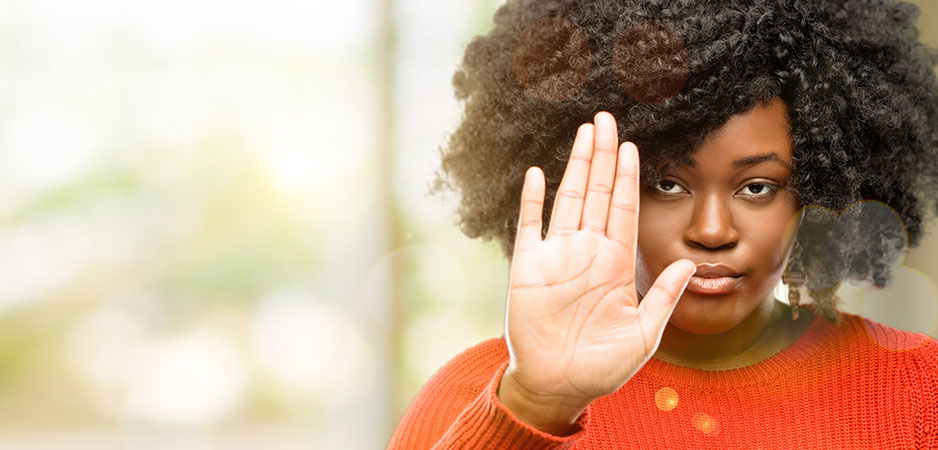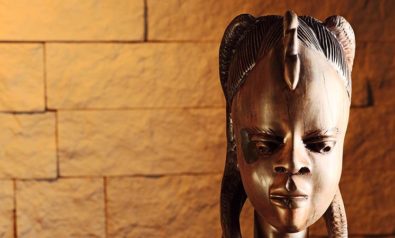The impact of the #MeToo movement has no doubt been useful in getting us to speak about the traumas we experience in various spaces. But there is more to be done. Every institution, ranging from private to public, which includes professional, religious, political, educational and social organizations, is not exempt from its reach. However, when thinking about women of color and their experience in this social awareness and accountability movement, I cannot help but consider how academe often silences these voices.
My research on black female lawyers in elite law firms utilizes narratives to discuss the obstacles these women face as they attempt to rise to the rank of partner. Some of the obstacles include lack of access to substantive training and professional development; mentorship and sponsorship; networking opportunities while simultaneously navigating white narratives of affirmative action; perceptions of incompetence; tokenism, hypervisibility and added invisible labor levied in the form of the inclusion tax.
Keeping the #MeToo Movement Relevant During the Pandemic
The interviews I conducted often included veiled admissions of gendered and racial aggressions. The challenges my participants encountered in elite white institutions made me think about my own experiences transitioning from a predominately white corporate organization into a complex white patriarchy of academia, particularly the challenges ahead of me mainly with regard to the #MeToo movement and what it means to be a woman of color in higher education, but specifically a black woman.
Ivory Halls
The everyday gendered and racial aggressions black women academics face create distinct challenges that have often been unspoken or unacknowledged in the ivory halls of academia. Yet through the #MeToo movement there is an opportunity to engage in deeper dialogue where we recognize the impact sexual assault and gender harassment have, large or small, on the career trajectories, access to opportunity, learning potential and advancement prospects of women of color.
Each social movement needs to have a particular focal point. In centering the voices of victims who have experienced sexual harassment, we create the space to address various types of offenses. I question whether using a gender-only lens prevents us from detecting the unique experiences within the movement, as well as the distinct experiences of actors within this focal frame. Approaching the issue from multiple vantage points would be beneficial in addressing the distinct experiences of women of color.
Deeper scrutiny would reveal other forms of harassment in the workplace, which is crucial to addressing the overall gendered power dynamics that disadvantage women of color. As defined by the US Equal Employment Opportunity Commission, “Harassment can include ‘sexual harassment’ or unwelcome sexual advances, requests for sexual favors, and other verbal or physical harassment of a sexual nature. Harassment does not have to be of a sexual nature, however, and can include offensive remarks about a person’s sex. For example, it is illegal to harass a woman by making offensive comments about women in general.”
Although some forms of harassment may not be sexual in nature, they are often motivated by race and gender, and can be meted out by men as well as women. Gender harassment leads to negative outcomes for women in the workplace. For example, excluding women from participating in social networking events that diminishes their opportunity to make useful connections and advance — the so-called boys’ clubs — is a form of harassment.
In light of all of the sensationalized stories about sexual violence, there are everyday sexual assaults that are often racially motivated that do not get the attention in public discourse. White women’s issues have been centered in the public discourse. Power and privilege are determinants that shape this movement and are all too often neglected. The #MeToo Movement relates to sexually predatory behavior experienced within a power dynamic that suggests women are subordinated. The inclusion of more subtle forms of harassment may lead to targeted and in-depth discussions about power dynamics and what institutions can do to address abuses of power perpetrated against women of color.
Nuanced Differences
On the one hand, we have to be strong and self-reliant and, on the other, we become potential victims of predatory behavior based upon the hierarchical categories that often manifest through status, race or sex. The intersectional identities of women of color create nuanced differences in the ways we navigate white institutional spaces. This also leaves us open to potential forms of sexual, gender and racial harassment perpetuated by (white) male and female actors that often render us silent. For example, a recent study by sociologist Yasemin Besen-Cassino and political scientist Dan Cassino points out that “harassers are conscious of power relationships, and choose to target more vulnerable women in their workplaces.”
The privileging of particular voices within the #MeToo movement is also prevalent within academia, where women of color, ironically, are still left on the margins of discourse regarding everyday sexual assaults and gender harassment that are racially motivated. According to the 2018 report by the National Women’s Law Center, “Black women led the highest number of sexual harassment charges (15.3) per 100,000 women workers, which is nearly 3 times higher than the rate for white, non-Hispanic women, who led just 4.7 sexual harassment charges per 100,000 women workers.” Within academia, men are privileged over women, white women over women of color, and the hierarchy continues as we thoroughly examine the depths of systemic gendered racism embedded within our culture and the workplace.
Women who speak about their own victimization are often further marginalized and their career trajectories are derailed. Men in positions of power continue to hold the keys to the doors of access, limiting women as a whole and women of color in particular. According to the National Center for Education Statistics data, across the United States, women of color made up approximately 12% of full-time faculty — 5% Asian, 3% black, 3% Hispanic and 1% American Indian/Alaska Native.
The structural gendered racism that already prevents women of color from holding positions of power, where they may be safer, also perpetuates their likelihood of being vulnerable to harassment and assault. This in turn makes women of color even less able to speak out about their harassment without fear of retaliation. Black women face various types of harassment in academe that create concrete barriers and make it extremely difficult to not only get in the door but also advance.
I believe the #MeToo movement gives scholars and administrators in higher education an opportunity to closely examine systemic issues of power and privilege. This power and privilege often relate to race, gender, class, culture and the interlocking systems of oppression that sustain the continued life of structural gendered and racial oppression in white institutions. If we do not address the glaring lack of women of color, and black women particularly, in faculty ranks, how can we address systemic issues of racial and gender inequities?
Like the vision put forth by the founder of the #MeToo movement, Tarana Burke, academia should strive to find effective ways to fill the gaps within their institutional services for survivors of sexual assault, gender harassment and discrimination. Especially acknowledging that assault, harassment and discrimination often lead to the derailment of career trajectories and create further emotional, mental and physical labor managing traumas.
Furthermore, educational institutions should work to provide resources to prevent such offenses from occurring in the first place. And if they do occur, there should be effective mechanisms in place to curtail the effects on potential victims. In order to do this, we must address the structural racism and sexism that props up our institutions. Accountability on the institutional level is crucial to change. We should be encouraging one another to talk about this openly and not forcing or shaming each other to remain silent. #MeToo speaks to the collective community and the effects of this type of trauma on all of us, but it also provides the opportunity to lift the voices of those who have been systematically silenced.
The views expressed in this article are the author’s own and do not necessarily reflect Fair Observer’s editorial policy.
Support Fair Observer
We rely on your support for our independence, diversity and quality.
For more than 10 years, Fair Observer has been free, fair and independent. No billionaire owns us, no advertisers control us. We are a reader-supported nonprofit. Unlike many other publications, we keep our content free for readers regardless of where they live or whether they can afford to pay. We have no paywalls and no ads.
In the post-truth era of fake news, echo chambers and filter bubbles, we publish a plurality of perspectives from around the world. Anyone can publish with us, but everyone goes through a rigorous editorial process. So, you get fact-checked, well-reasoned content instead of noise.
We publish 2,500+ voices from 90+ countries. We also conduct education and training programs
on subjects ranging from digital media and journalism to writing and critical thinking. This
doesn’t come cheap. Servers, editors, trainers and web developers cost
money.
Please consider supporting us on a regular basis as a recurring donor or a
sustaining member.
Will you support FO’s journalism?
We rely on your support for our independence, diversity and quality.

















